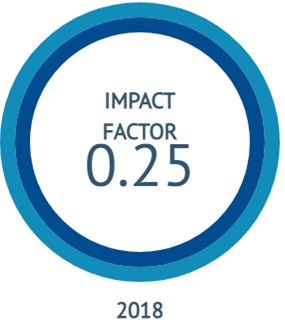The Effectiveness of Bio-Slurry and Inorganic Fertilizer Combination on the Performance of Rice (Oryza sativa L)
Abstract
The experiment was aimed to investigate the effectiveness of bio-slurry and inorganic fertilizer combination on the performance of two rice varieties. A completely randomized design of factorial pattern was used throughout the experiment. The first factor was the combination of bio-slurry and NPK fertilizer that consisted of P0 : no added fertilizer, P1 : NPK fertilizer only, 550 kg/ha; P2 : bio-slurry 2.3 tons/ha + NPK fertilizer 400 kg/ha; P3 : bio-slurry 4.6 tons/ha + NPK fertilizer 250 kg/ha; P4 : bio-slurry 6.9 tons/ha + NPK fertilizer 100 kg/ha; and P5 : bio-slurry only, 8.5 tons/ha. Treatments were applied based on nitrogen recomended doses of rice, 165 kg N/ha. The second factor was rice varieties that consisted of V1 : IR-64 and V2 : Ciherang. Each treatment was repeated three times. Parameters observed were plant height, number of tillers, weight of 1,000 grains, and rice production. Data were statistically analyzed using ANOVA and followed by Duncan’s Multiple Range Test. On the basis of the experimental results it was concluded that bio-slurry may replace the role of inorganic fertilizer in rice production, especially IR-64 and Ciherang varieties.
Keywords: bio-slurry, ciherang, IR-64, NPK fertilizer, rice
Downloads
References
2. Basak KD, Kibiria MG, Hossain M, and Hoque MA. 2016. Improvement of rice production through combined use of organic manure and bio-slurries with chemical fertilizer. Asian Aust. J. Biotech., 1 (1): 75-78.
3. Bharde NM, Shivay YS, and Singh S. 2003. Effect of bioslurry and neem oil-treated urea sources in rice (Oryza sativa)-wheat (Triticum aestivum) cropping system. Indian J. Agron., 48 (2): 73-75.
4. Dahlan D, Musa Y, and Ardah MI. 2012. Growth and production of two varieties of paddy rice on various fertilizer recommendation treatments (In Indonesian). J. Agrivor., 11 (2): 262-274.
5. Garg RN, Pathak H, Das DK, and Tomar RK. 2005. Use of fly ash and biogas slurry for improving wheat yield and physical properties of soil. Environ. Monit. Assess., 107: 1-9. DOI:https://doi.org/10.1007/s10661-005-2021-x
6. Ghoneim AM. 2008. Nitrogen dynamics and fertilizer use efficiency in rice using the 15 nitrogen isotope technique. World Applied Sci. J., 3 (6): 869-874.
7. Gnanamani A and Bai K. 1992. Influence of biodigested slurry on rice-gram cultivation. Bioresources Tech., 4 (1): 217-221. DOI: https://doi.org/10.1016/0960-8524(92)90005-I
8. Groot LD and Bogdanski A. 2013. Bio-slurry brown gold: a review of scientific literature on the co-product of biogas production. FAO-UN. Roma. Hardjadi MS. 1991. Introduction to agronomy (In Indonesian). PT. Gramedia, Jakarta , 91-109
9. Hartanto Y and Putri CH. 2013. Guidelines for the use and pprovision, management and utilization of bio-slurry (In Indonesian). Home biogas team (blue), energy home foundation, Jakarta, 1-31
10. Haque A. 2013. Bio slurry ultimate choice of biofertilizer. Bangladesh Agric. Univ., 2: 738 doi:10.4172/scientificreports.738.
11. Henry C, Sullivan D, Rynk R, Dorsey K, and Cogger C. 1999. Managing nitrogen from biosolid. Northwest biosolid management association. Washington, the USA, 1-60
12. Hossaen MA, Shamsuddoha ATM, Paul AK, Bhuiyan MSI, and Zobaer ASM. 2011. Efficacy of different organic manures and inorganic fertilizer on the yield and yield attributes of boro rice. The Agriculturists., 9 : 117-125.
13. Liferdi L. 2010. Effects of phosphorus on growth and nutrient status of mangoesteen seeds (In Indonesian). J. Hort., 20 (1) : 18-26.
14. Leomo S, Sutariati GAK, and Agustina. 2012. Test of organic and inorganic fertilizers combination of the LEISA pattern on the growth and yield of local sorghum on marginal land (In Indonesian). J. Agroteknos., 2 (3) : 166-174.
15. Novira F, Husnayetti, and Yoseva S. 2015. Application of liquid waste biogas and urea, TSP and KCl on the growth and production of aweet corn (Zea mays sacsharata Sturt.) (In Indonesian). JOM Faperta, 2 (1): 1-15.
16. Rhaman MS, Kibria MG, Hossain M, and Hoque MA. 2016. Effects of organic manure and bio-slurries with chemical fertilizers on growth and yield of rice (cv. BRRI dhan28). Int. J. Expt. Agric., 6 (3): 36-42.
17. Sonbai JHH, Prajitno D, and Syukur A. 2013. The growth and yield of maize on various application of nitrogen fertilizers in dry land regosol (In Indonesia). Ilmu Pertanian, 16 (1): 77-89.
18. Suprihatno B, Daradjat AA, Satoto, Baehaki, Suprihanto, Setyono A, Indrasari SD, Wardana IP, and Sembiring H. 2010. Description of rice varieties (In Indonesian). Balai Besar Penelitian Tanaman Padi, Sukamandi District, West Java
19. Province.: 105 p. Taiz L and Zeiger E. 2002. Plant physiology. Sinauer Associates, Inc., Publisher. Sunderland, Massachusetts.
Copyright (c) 2018 Journal of Applied Chemical Sciences

This work is licensed under a Creative Commons Attribution-NonCommercial-ShareAlike 4.0 International License.

 Ahmad Khanafi(1)
Ahmad Khanafi(1)










